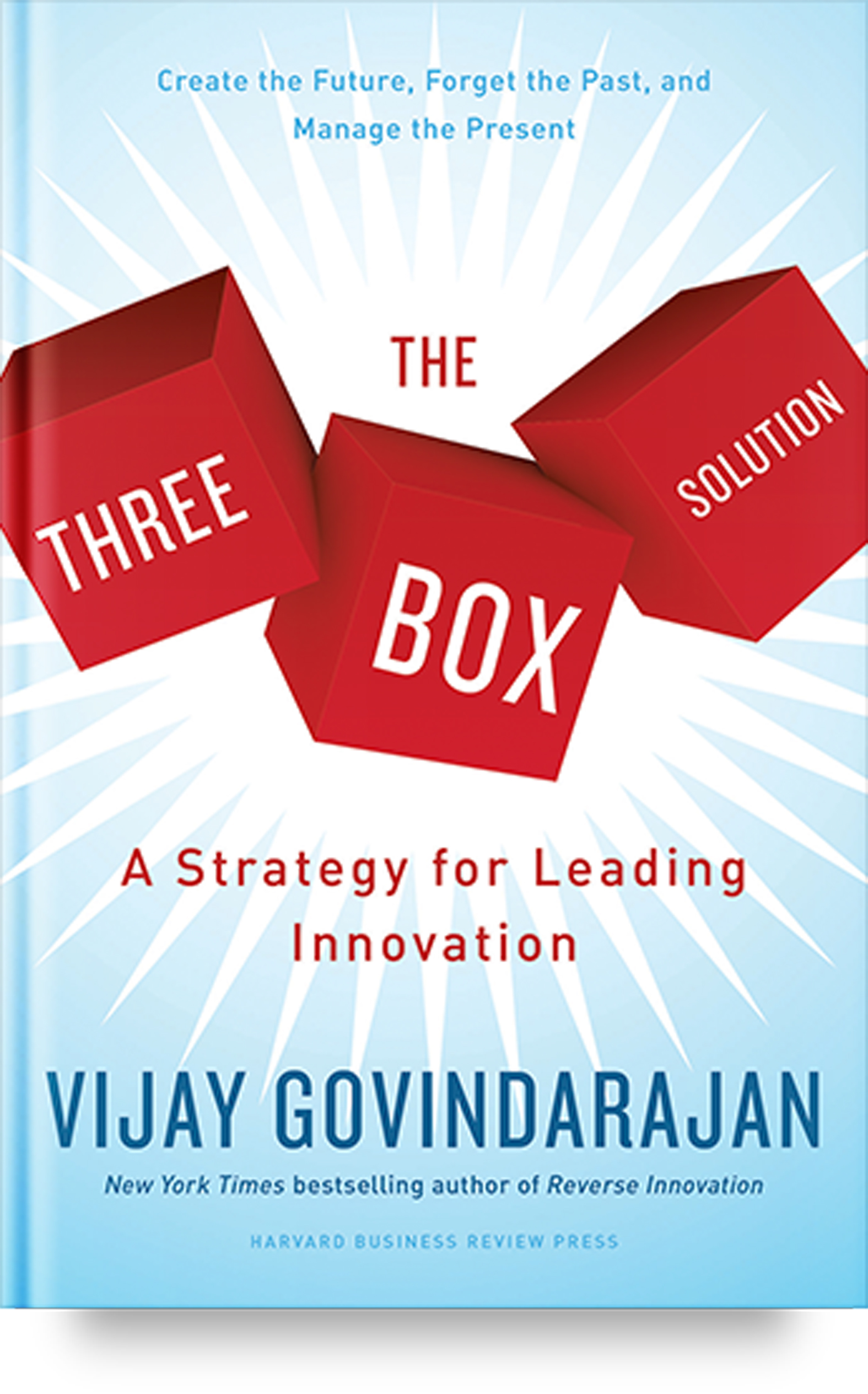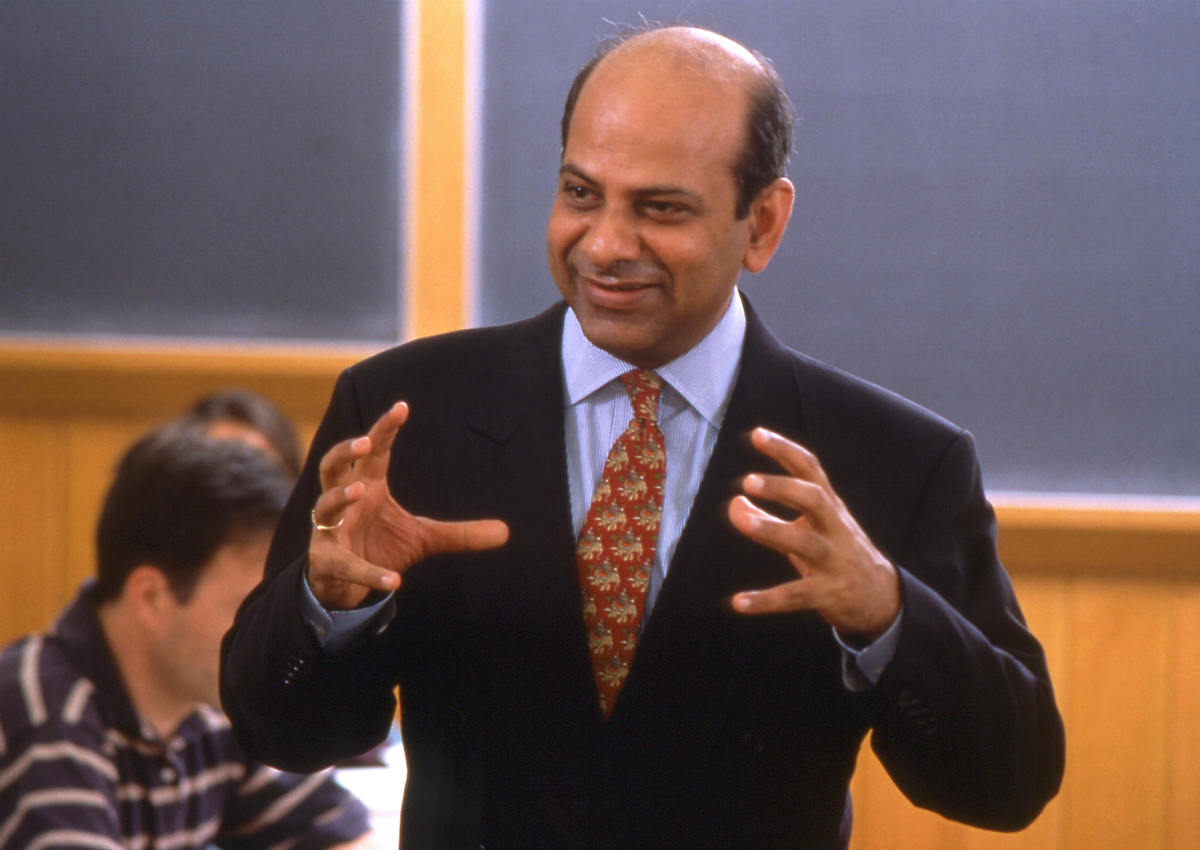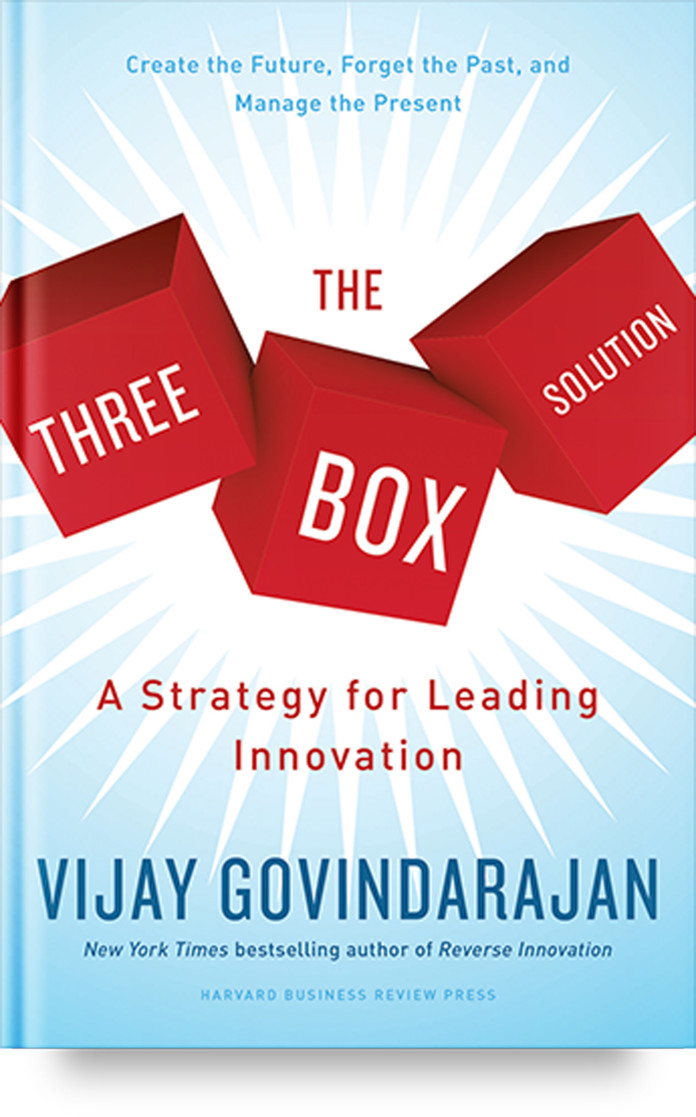Professor Vijay Govindarajan is one of five Indians featured in a ranking of the world’s top 50 management thinkers. He speaks to tabla! about reverse innovation, his grandfather’s influence and his forthcoming book
His books have made it to the New York Times’ and Wall Street Journal’s bestseller lists. Well known for his work in the areas of strategy and innovation, Professor Vijay Govindarajan was the First Professor in Residence and chief innovation consultant at General Electric.
He is also a Coxe Distinguished Professor at Tuck at Dartmouth and a Marvin Bower Fellow at Harvard Business School. He has been featured on the Thinkers 50 ranking in 2011, 2013 and 2015.
In this interview, he shares with tabla! his insights on “innovating in a poor country like India and selling those products in a rich country like the US”, and a strategy for leading innovation where the company has to manage the present, while inventing the future.
He says: “Creating a successful future for Singapore is not about what you have to do in the future. It is about what you have to do today. For the Singapore Government, too, the future is now.”
In your blog post you mentioned that your grandfather had a great influence on you. Tell us how he influenced you in your younger years and continues to inspire you.
My grandfather literally spent millions of hours educating me. For him, I was a project! I remember every day coming home from school, the first question he’d ask: “VG, What did you get in Math test today?” If I got 100 out of 100, I was OK. Otherwise, he’d make me do more work! He had such tremendous ambition for me, I couldn’t let him down.
I never once heard my grandfather say: “You’ve done a great job.” For him, I can always do better and I need to set my sights higher. I never minded my grandfather’s discipline since I knew he was always acting in my best interest. He’d make me work even during summer holidays on the coursework for the next academic year. He used to jokingly say: “I am an old man and may pass away. I want to give you at least 12 months advantage!”
The enduring legacy of my grandfather is that I should always set the bar higher and go for the moon. I feel his spirit is with me even now. He keeps me going.
You were the First Professor in Residence and chief innovation consultant at General Electric (GE). Share with us GE’s experience in bringing the cost of an ECG machine (from US$3,000 to US$10,000) all the way down to US$500 by innovating specially for India in India. I believe they even developed a low-cost model for the US based on the Indian model.
Historically, multinationals innovated in a rich country like the US and sold those products in a poor country like India. Reverse innovation is about doing exactly the opposite. It is about innovating in a poor country like India and selling those products in a rich country like the US. When you think about it, this is a counterintuitive idea. Why? Because it is perfectly logical to see why a poor man would want a rich man’s product. But it is not that logical to see why a rich man would want a poor man’s product. That is the essence of reverse innovation. It has the potential to create huge growth for multinationals as well as local companies in the future.
Take the case of GE Healthcare’s high-end ECG machine that they innovated for the US customer. It costs about US$20,000 (S$26,967), weighs 500lb (226.8kg) works on home electricity, and is a sophisticated machine that only trained doctors can operate. In India, GE does sell this high-end machine to the top 10 per cent of the economic pyramid. After all there will be rich folks in poor countries, just like the way there will be poor folks in rich countries.
But what about the remaining 90 per cent of Indians? There are many reasons as to why the 90 per cent of Indians are non-consumers of the US$20,000 ECG machine. The first and the most obvious reason is affordability. Second, there are no hospitals in rural India with sophisticated imaging centres. That means, patients can’t go to hospitals but the hospitals have to come to the patients. It is difficult to take the 500lb machine door-to-door. Besides there is no reliable source of electricity to operate the US$20,000 ECG machine in rural India.
 Book cover: The Three Box Solution: A Strategy For Leading Innovation by Vijay Govindarajan.
Book cover: The Three Box Solution: A Strategy For Leading Innovation by Vijay Govindarajan.
Finally, trained doctors are absent in rural India. However, the 90 per cent of non-consumers in India also suffer from heart attacks. That is my point. Non-consumers have exactly the same problem as consumers. If you can do breakthrough innovation, you can convert non-consumers into consumers. The bonus is that those highly-affordable products can transform the lives of consumers. That is the reverse innovation opportunity.
In 2008, GE Healthcare India innovated a US$100 ECG machine – highly affordable, extremely lightweight (can be carried in a backpack), battery-operated, and extremely simple to use. GE has converted a whole lot of non-consumers into consumers with this US$100 ECG machine. Here is the real payoff: The US$100 ECG machine is sold in over 100 countries including the US where it generates exciting new growth for GE.
Why? Imagine there is an accident on a highway in the US. You can’t put a piece of equipment the size of a US$20,000 ECG machine inside an ambulance. But you can put the US$100 ECG machine in the ambulance. This is an example of reverse innovation: The innovation is first adopted in a poor country, then it transforms the lives of people in rich countries.
Tell us about your forthcoming book The Three Box Solution. At first glance, the idea proposed in it – simultaneously manage the present, let go of the past and invent the future – sounds like Indian Trimurthi rearranged with Vishnu in the beginning. (Vishnu, the Preserver, Siva, the Destroyer, and Brahma, the Creator). Is it applicable to societies? How should city states like Singapore manage such competing demands?
I have been working with the Three Box Framework for strategy and innovation with CEOs and senior executives for the past 35 years. But I have never really written a book about it. Finally I decided to write the book on three boxes. The book is almost like the Star Wars prequel, go back to where it all started. Harvard Business Review Press will publish the book The Three Box Solution: A Strategy For Leading Innovation next month. The book describes how to meet the performance requirements of the current business – one that is still thriving – while dramatically reinventing it (two fundamentally different management challenges that are hard to do simultaneously). You can get more details on the book from the book website (www.3boxsolution.com) or watch the book trailer on YouTube.
For more than 35 years I have taught, written, and consulted about the challenges of building a sustainable business by establishing disciplines that enable a continuously revitalised future. I have learned that the main impediment to achieving such a future is that the demands of the present core business often become all-consuming. The work of the present thus drains energy, organisational attention and investment away from the kinds of nonlinear innovation that fuel new business opportunities. This is a common ailment that greatly endangers many, if not most, enterprises.
Over these three-plus decades, I have studied numerous strategy failures and a smaller number of inspiring recoveries and outright successes. From my observations, I have distilled a framework that shows how businesses – and their people – can take concerted action in three time horizons at once: Executing the present core business at peak efficiency (Box 1); avoiding the inhibiting traps of past success (Box 2); and building a future, day by day, through a process of strategic innovation (Box 3).
I have written about my framework in the book The Three Box Solution. In it, I describe how foresightful, disciplined businesses have mastered each of the Three Boxes and built a balanced portfolio of solutions that answer the challenges of ongoing self-renewal. The fundamental principle of The Three Box Solution is that the future is now. The future is not about what you have to do in the future. The reason this is hard is that today, you have two jobs to do. One job is in Box 1 and the other is in Box2/3 inventing the future. Yet, there are inherent conflicts between the two. This is the central leadership challenge that the book addresses.
The notion of preservation-destruction-recreation as a continuous process originates from the Hindu scriptures. The Three Box Solution parallels what Hindu scriptures recognised almost 3,500 years ago – the three Hindu gods. Lord Vishnu is the God of Preservation (Box 1, Manage the Present). Lord Shiva is the God of Destruction (Box 2, Destroy the Past), and Lord Brahma is the God of Creation (Box 3, Create the Future).
It can just easily apply to the Government of Singapore as it can apply to a corporation. The prime minister has to have projects in the year 2016 across the Three Boxes. Creating a successful future for Singapore is not about what you have to do in the future. It is about what you have to do today. For the Singapore Government too, the future is now.
In fact, the Three Box Solution can be applied at the individual level to drive personal strategy. I use the Three Box Framework to guide my own life.
S.N. Venkat is a senior associate director at Singapore Management University

Get a copy of tabla! for more stories.






